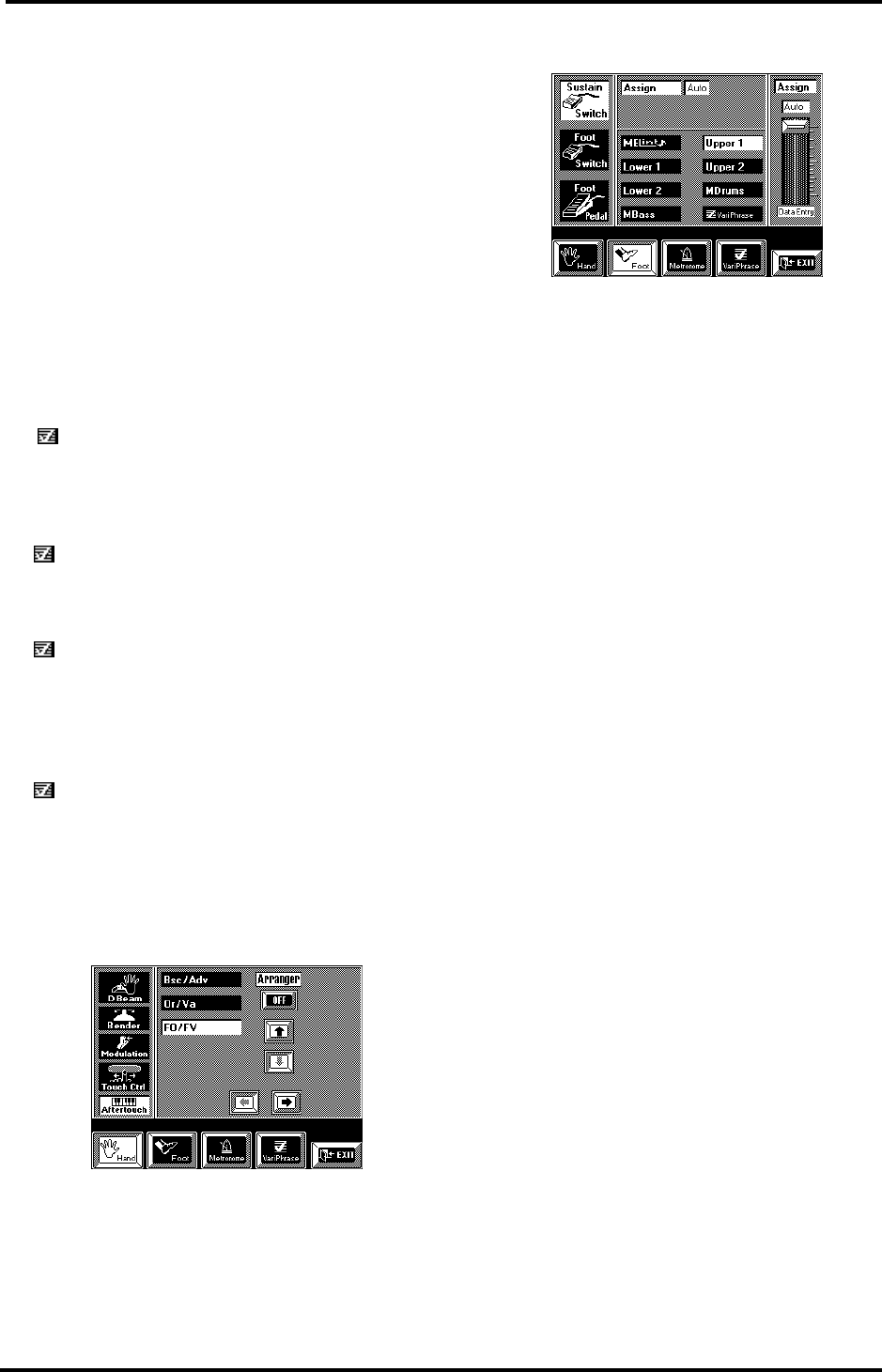
VA-76 Owner’s Manual—Miscellaneous
190
LFO2 Rate, LFO2 Pitch, LFO2 TVF, LFO2 TVA—
Same setting range and meaning as the corresponding
LFO1 parameters. Note that not all Tones use a second
LFO, which is why these settings do not always yield
the desired effect.
Note: Except for Rate, the LFO parameters are absolute set-
tings that do not alter existing values. That explains why
their setting range is 0~127 rather than –64~63. Use these
parameters (Pitch~TVA) to add a new aspect to the selected
Tone.
Note: Like the Part parameters (see page 125), the After-
touch settings apply to the Keyboard part in question, so
that selecting another Tone for such a part does not mean
that the values will be reset to “0”.
Parameters for the VariPhrase part
The following VariPhrase parameters can be con-
trolled via the Aftertouch:
Pitch— (Up, Down, Off) Select “Up” if you want
to be able to raise the VariPhrase’s pitch via the After-
touch. “Down” means that you can lower the pitch.
Select “Off” if the pitch should not be controlled via
the Aftertouch.
Time— (Up, Down, Off) Select “Up” or “Down”
to be able to increase/decrease the speed of the selected
VariPhrase via the Aftertouch. Select “Off” if that is
not necessary.
Formant— (Up, Down, Off) Select “Up” or
“Down” to be able to raise/lower the Formant of the
selected VariPhrase via the Aftertouch. Select “Off” if
that is not necessary. See “Things you ought to know
about VariPhrase” on page 48 for details about the for-
mant.
LFO Pitch, LFO Frmnt, LFO Level, LFO Pan—
(0~63) These parameters behave exactly like the ones
you can assign to the Modulation axis of the
BENDER/MODULATION lever. See page 188.
Parameters for Arranger control
Use the [m] field to select Arranger. The display
should now look like this:
Press the [ON/OFF] field to make it read [ON] if you
want to control the Arranger. See page 97.
Note: Even Aftertouch messages generated outside the chord
recognition area will trigger the selected switching function.
Sustain Switch (CC64)
The parameters on this page are related to an optional
DP-2, DP-6, or BOSS FS-5U footswitch you connect
to the SUSTAIN FOOTSWITCH socket. Also called
“Hold pedal” or “Damper” pedal, this switch allows
you to hold the notes you play on the keyboard in
much the same way as on an acoustic piano.
Though you cannot assign other functions to this
footswitch, you can decide when a given part should
respond to these messages. Note that for the Vari-
Phrase part, more refined hold options can be
assigned to the optional footswitch (see below), while
you could use that optional footswitch as a separate
Hold pedal for the Lower1 and/or 2 part.
Use the fields in the center of the display to select the
Keyboard part whose Sustain setting you want to
change.
Assign— Auto means that the part in question only
responds to Sustain messages if it is assigned to the
right half (SPLIT) or the entire keyboard (WHOLE).
On means that the part in question always responds to
Hold messages, even if it is assigned to the left half of
the keyboard. Off, finally, means that the part does not
respond to Hold messages.
VA-76.book Page 190 Friday, January 12, 2001 12:35 PM


















